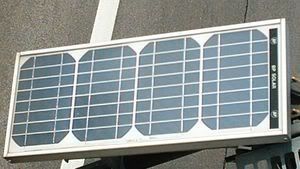


As fate would have it, Eckhard Gerber, the man who could satisfy the sheikh's desire for innovation, was present to hear his words. Gerbel comes from Oespel-Kley, an obscure suburb of the German city of Dortmund, where he has an architecture office located in a 19th-century mansion that was once home to the area's top farming family.
A handful of architects in the old building recently dreamt up a state-of-the-art tower, a giant 68-story building projected to rise to a lofty height of 322 meters (1,056 feet), which would make it number 22 on the list of the world's tallest buildings. What is even more impressive is that not only will the Burj al-Taqa ("Energy Tower") consume very little energy -- but it will also produce all its energy itself.
"There's nothing like this in the whole world," Gerber says in praise of his own work. The architect suffers no false modesty when it comes to assessing his own project. "This kind of accomplishment is very rare," he says.
Municipalities and project developers in various Arab cities have already praised the self-sufficient eco-tower -- which exists only in digital form at present -- as "fantastic" and "brilliant," Gerber says. Gerber wants to reach an agreement with the Bahrain-based company Almoayed Holdings -- the investor that apparently wants to finance the €300 million ($406 million) project -- before the end of the year. The investor belongs to one of the five most powerful families on the island state. The German architect is also attracting the attention of financiers in Dubai and Riyadh, thanks to his high-tech tower, which is powered only by sunlight, wind and water.
Gerber is not completely unknown in the region, however. His architecture office is building both the King Fahad National Library and a science center, complete with its own shopping mall, in the Saudi Arabian capital Riyadh.
Now, with the Burj al-Taqa, Gerber is engaging in a far bolder experiment -- one that would, however, not have been conceivable without the support of the Stuttgart engineering company DS-Plan. The architectural consultants were responsible for planning practically the building's entire technological facilities.
The outer surface is usually considered especially problematic for giant glass constructions. A study by the Darmstadt-based Institute for Housing and Environment, for example, revealed worrying conditions in German office blocks. Employees were sweltering in room temperatures well above 40 degrees Celsius (104 degrees Fahrenheit) in the summer, according to the study.
Hence the Burj al-Taqa's cylindrical shape is designed to expose as little surface area to the sun as possible. A protective solar shield reaches from the ground to the roof, covering 60 degrees of the giant circular building. It protects the side most affected from the sun's glaring rays, making sure that none of the rooms are exposed to direct sunlight. The diffuse light on the other sides of the building is tempered by a mineral coating on the windows.
The tower's façade is to be built from a new generation of vacuum glazing that will only come on the market in 2008. The new top-quality windows are meant to largely shield the interior of the tower from outside heat -- indispensable in a region where outside temperatures can reach 50 degrees Celsius (122 degrees Fahrenheit) in the summer. This is made possible by a new breakthrough in the quality of the materials used: The new vacuum glazing windows transmit as much as two thirds less heat compared to today's products.
"Such a building has to work like a thermos flask," says DS-Plan's energy manager Peter Mösle. "It has to have a cooling effect in the summer and retain heat in the winter."
---------------------------------------------------------------------------------------------------------------------
Gedung ini sumber energinya berasal dari alam, memakai sinar matahai, angin dan air. Yg mana ketiga sumber alam tsb digunakan sbg penggerak listrik.
Air laut digunakan untuk menyejukkan udara di dalam gedung, terdapat 3 unit besar alat penyejuk yg dapat menurunkan suhu udara menjadi 18 derajat Celcius (64.4 Farenheit). Udara yg sejuk akan dialirkan melalui saluran transparan menuju atrium dan dari sana menuju koridor2 dan ruang2 kantor.
Untuk pasokan listrik disediakan 60 meter (197 kaki) turbin di atas atap dan 2 failitas panel surya (sel photovoltaic) yg dpt meng cover area seluas 15.000 m2 . Energi tambahan diambil jg dari panel surya dr pulau seluas 17.000 m2.
Kelebihan listrik di dalam gedung akan digunakan untuk menarik hydrogen dr air laut. Hydrogen tsb disimpan di tabung khusus. Pd malam hari energi yg dihasilkan akan ditransfer ke photo voltaic (panel surya di atas gedung) yg digunakan untuk menerangi gedung ini.
Jd meskipun malam hari tanpa sinar matahari, gedung ini tetep dpt menghasilkan energi dr pasokan hydrogen.

 Did You Know...
Did You Know...